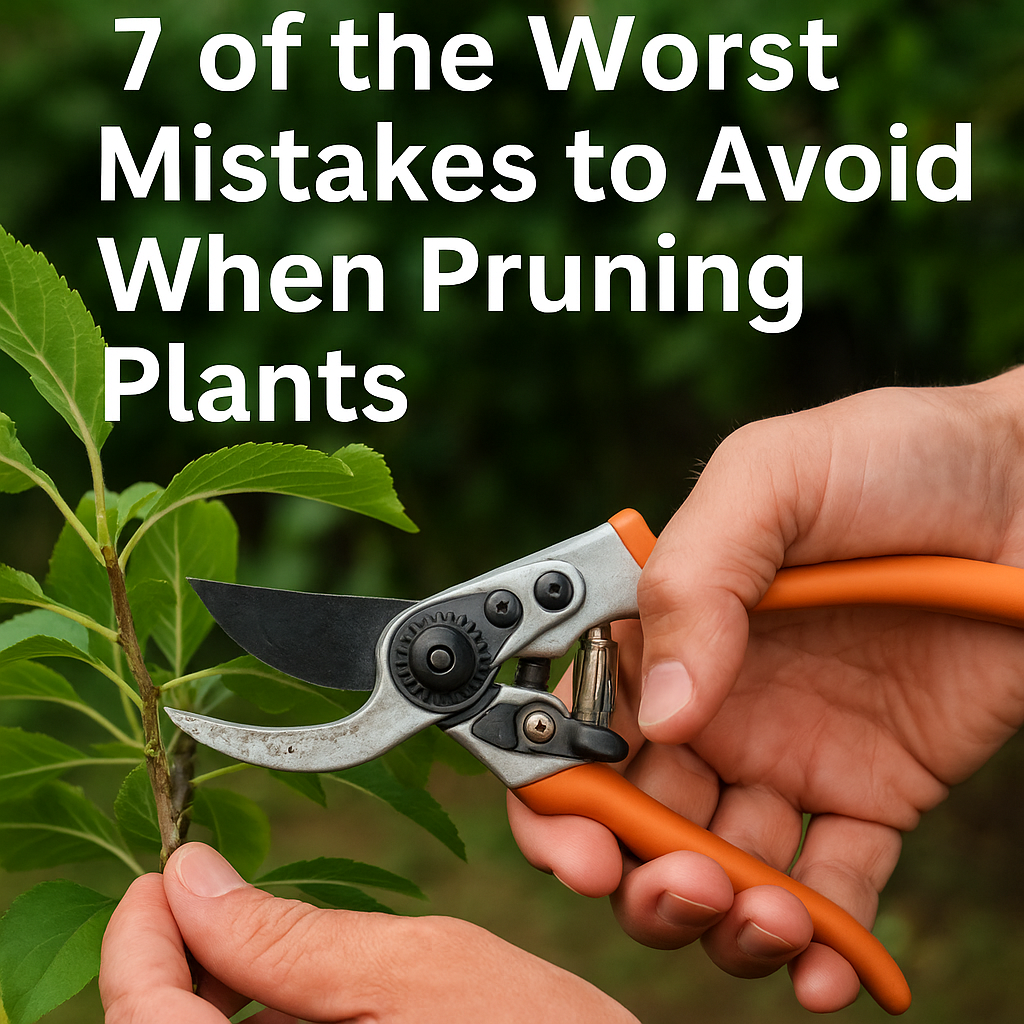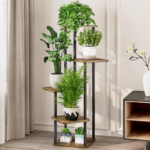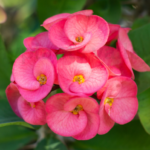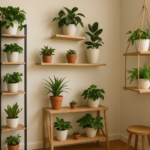Pruning can transform a struggling plant into a lush beauty—or sadly, the other way around if done wrong. I’ve seen too many plants suffer simply because of a few preventable mistakes. Pruning isn’t just about snipping away leaves or branches—it’s about knowing when, where, and how to cut for the plant’s health and appearance. Think of it like giving your plant a haircut: do it the wrong way, and you risk stunting its growth or even killing it. In this guide, I’ll walk you through the seven worst mistakes you must avoid when pruning plants so your greenery can thrive.
How often should I clean my pruning tools?
You should clean your pruning tools after every use to maintain plant health and prevent the spread of diseases. If you’re working on multiple plants—especially if one shows signs of pests, fungus, or disease—disinfect the blades between each plant. A quick wipe with rubbing alcohol or a diluted bleach solution (1 part bleach to 9 parts water) is effective. Regular cleaning removes sap and debris, keeps blades sharp, and ensures smooth, clean cuts that heal faster. For heavy use, deep-clean and sharpen tools at least once a month to extend their lifespan and keep your plants safe and thriving.
Mistake 1 – Pruning at the Wrong Time
Pruning at the wrong time can set your plant back significantly. Each plant has an ideal season for pruning, and ignoring that can lead to fewer blooms, slower growth, or even plant death. For most flowering plants, pruning right after they’ve finished blooming encourages new growth and more flowers next season. On the other hand, if you prune in early spring before certain plants flower, you may accidentally remove all the buds.
Why timing matters:
Plants have natural growth and rest cycles. Pruning during active growth can cause unnecessary stress, while pruning during dormancy allows them to heal and redirect energy effectively. For example, fruit trees benefit from late winter or early spring pruning, while spring-flowering shrubs do best if pruned right after blooming.
Seasonal guidelines:
- Spring bloomers: Prune immediately after flowering.
- Summer bloomers: Prune in late winter or early spring.
- Evergreens: Light prune year-round, heavy prune in late winter.
Getting the timing right ensures your plant heals quickly and rewards you with healthy, vibrant growth.
Mistake 2 – Using Dull or Dirty Tools

Using dull or dirty pruning tools is like trying to cut your hair with rusty scissors—it’s going to be messy. Dull blades tear rather than slice cleanly, damaging plant tissue and slowing down recovery. Dirty tools can spread bacteria, fungi, or pests from one plant to another, creating bigger problems than you started with.
Why sharp, clean tools matter: Clean cuts heal faster and reduce the risk of disease. Before each pruning session, check your tools for sharpness and sanitize them with rubbing alcohol or a bleach-water solution.
Tips for tool maintenance:
- Sharpen blades regularly using a sharpening stone or file.
- Wipe blades after every use to remove sap and debris.
- Disinfect tools between plants, especially if one is diseased.
Healthy plants start with healthy tools. Think of it like surgery—you wouldn’t want your surgeon using a dirty scalpel, and your plants feel the same way.
Mistake 3 – Over-Pruning
Over-pruning is one of the fastest ways to weaken a plant. While it’s tempting to “tidy up” aggressively, removing too much foliage robs the plant of its ability to photosynthesize and produce food.
Signs you’ve pruned too much:
- Sparse leaves or bare stems.
- Slowed growth.
- Wilting or sunburned foliage.
How to avoid it:
Only remove 10–20% of a plant’s foliage in one session, unless it’s a rejuvenation pruning for severely overgrown plants. Spread heavy pruning over multiple seasons to allow recovery.
If you’ve already over-pruned, help the plant bounce back with proper watering, mulching, and balanced fertilization. Avoid pruning again until new growth is established.
Mistake 4 – Incorrect Cutting Technique
Even with the right timing and tools, poor technique can harm your plants. Cutting too close to the main stem can damage the growth collar, while leaving long stubs invites disease.
Best cutting practices:
- Cut just above a leaf node or bud facing the direction you want growth.
- For thick branches, use the three-cut method to prevent tearing bark.
- Always angle cuts away from the bud to avoid water pooling.
Good technique isn’t just about aesthetics—it directly affects plant health and longevity.
Mistake 5 – Ignoring Plant Structure
Pruning without considering a plant’s natural shape is like cutting hair in the dark—you might regret the result. Ignoring structure can lead to awkward, weak growth that ruins both health and beauty.
How to read plant structure:
- Identify the central leader (main stem) for trees.
- Look for crossing, rubbing, or inward-growing branches to remove first.
- Maintain balanced spacing so sunlight and airflow can reach the inner canopy.
Respecting a plant’s architecture keeps it strong, stable, and visually appealing.
Mistake 6 – Pruning Healthy Growth Unnecessarily

Not every green shoot is a problem. Removing perfectly healthy growth for no reason wastes the plant’s stored energy and may trigger stress responses.
When to remove healthy parts:
- If they’re crowding the center and reducing airflow.
- If they’re blocking sunlight to important branches.
- If you’re shaping the plant for better structure or aesthetics.
Otherwise, let your plants enjoy their healthy leaves—they’re the plant’s solar panels, after all.
Mistake 7 – Neglecting Safety Precautions
Pruning isn’t just risky for plants—it can be risky for you. Sharp tools, heavy branches, and thorny or toxic plants require caution.
Safety tips:
- Wear gloves to protect hands from cuts and irritants.
- Use eye protection when cutting above shoulder height.
- Be mindful of ladders and avoid overreaching.
Healthy plants are important, but so is keeping yourself safe and injury-free.
Conclusion
Pruning is both an art and a science. By avoiding these seven mistakes—pruning at the wrong time, using dull or dirty tools, over-pruning, poor technique, ignoring structure, removing healthy growth unnecessarily, and neglecting safety—you’ll set your plants up for long-term health and beauty. Treat each cut with care, and your garden will reward you with stronger growth, more blooms, and lasting vitality.
FAQs
1. Can I prune my plants during the growing season?
Yes, but stick to light pruning to avoid stressing the plant.
3. Is it okay to prune in the rain?
Avoid it—wet conditions can spread disease faster.
4. Can over-pruned plants recover?
Yes, with proper care, watering, and patience.
5. Should I seal pruning cuts with wound paint?
Usually no—plants heal best naturally unless disease risk is high.







